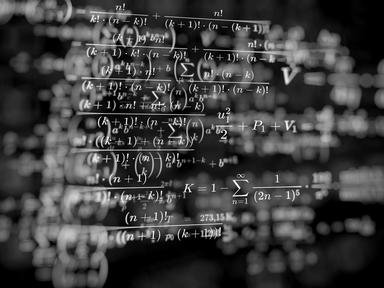Quiz Answer Key and Fun Facts
1. Exponents:
How many digits does the number 10 to the 100th power have?
2. Geometry:
Which has greater area: an equilateral triangle inscribed in a circle of radius 1 or a square inscribed in a circle of radius 1?
3. Algebra:
Let a and b denote the two roots of the quadratic equation x^2 - 3x - 7 = 0. What is the value of a + b? In other words, what is the sum of the roots of this equation?
4. Analytic Geometry:
Consider the line segment in the plane that has endpoints (1,-3) and (15,7). What is the x-coordinate of the midpoint of this line segment?
5. Trigonometry:
True or false: The functions f(x) = sin(x) and g(x) = cos(x) each have the same period.
6. Linear Algebra:
Let A be a 2 by 2 matrix whose first row consists of the numbers 1 and 2 and whose second row consists of the numbers 2 and 4. Yes or no: Is A an invertible matrix?
7. Classical Geometry:
Consider a triangle in the plane. It turns out there is a single circle that passes through all of the following points: The three midpoints of each side, the three feet of each altitude, and the three points that are the midpoint of the part of the altitude that joins the orthocenter and the opposite vertex. This circle has a name: it is called the _____ point circle. What number goes in the blank?
8. Field Theory:
True or False: There exists a field with 4 elements.
9. Complex analysis:
True or false: If we simplify (2 + 3i)^4 and (2 - 3i)^4, the answers are complex conjugates of each other. Here i is the square root of -1.
10. Set Theory:
Suppose A and B are sets with A a subset of B. True or false: The union of A and B is B.
Source: Author
rodney_indy
This quiz was reviewed by FunTrivia editor
crisw before going online.
Any errors found in FunTrivia content are routinely corrected through our feedback system.

